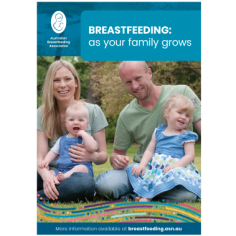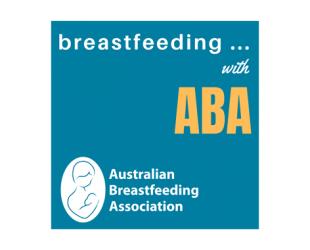Practical tips and support for breastfeeding your newborn and older child together

Tandem feeding means breastfeeding siblings who aren’t twins. You might feed them together, one after the other, or at different – whatever works for you.
For many mums, tandem feeding isn’t something they planned. If you’re breastfeeding your baby or child and fall pregnant you may find yourself continuing to feed during the pregnancy. If your child isn’t ready to wean, or if you find there are benefits to continuing, you might still be feeding when your new baby is born.
Milk changes and making enough for two
It’s natural to wonder if breastfeeding during pregnancy and after birth is safe. For most mums and babies, it’s perfectly okay.1 Your body will keep producing milk if you keep feeding your child. As time goes on your supply will likely drop due to pregnancy hormones. This happens even if your child feeds more often. In the later months, your milk changes to colostrum, ready for your newborn.
You might also worry that your toddler is taking milk meant for the baby. The good news is your breasts can adjust to make enough for both. Most toddlers feed far less often than a newborn and get most of their nutrition from other foods, so your baby’s needs will still come first.
Why tandem feed?
If you choose to keep breastfeeding your toddler after your baby arrives, you may discover there are real benefits. Tandem feeding can make life easier and strengthen family bonds during this big transition.
Benefits include:
- Your toddler’s stronger suck can help keep milk moving and ease engorgement while your newborn is still learning to feed.
- Feeding both can help maintain or boost your milk supply in the early weeks.
- It gives your toddler special connection time and helps them adjust to the new baby.
- Sharing breastfeeding can help your toddler feel close to their sibling.
- Many mums say tandem feeding creates a unique bond between their children, and with you.
Making feeds work for you
There’s no single “right” way to tandem feed—what works best depends on you, your baby, and your older child. You decide how to make feeds fit your family.
Things to keep in mind:
- You don’t have to feed both children at the same time (though you can if you want to). Many mums feed one after the other or at different times of day.
- It’s normal if your toddler asks to feed more when your milk supply increases a few days after birth. You might go along with this at first, or set gentle limits. Do what feels right for you.
- Because you’re making milk for two, your newborn might find your let-down reflex a bit fast. Changing the routine can help. You could offer one side to your toddler first to trigger milk flow, then attach your newborn.
- Try different positions for comfort, like sitting up with cushions or lying down. There are many ways to tandem feed. Choose what feels safe and comfortable for everyone.
- Some mums swap breasts between children, while others keep one child on each side. Either approach is fine.
- However you manage feeds, you’ll need time to rest and extra support while everyone adjusts to life with a new baby.
Eating and energy
If you’re tandem feeding, you’ll need to take extra care of your own health. You’ll probably feel hungrier than usual because your body is working hard. Your baby in the womb gets first pick of nutrients, then your breastfeeding child, and then you. Eating well from a wide range of healthy foods helps you provide for all three of you and keeps your energy up.
My toddler had weaned and now wants to feed again
If your older child had stopped breastfeeding before your new baby was born, they might ask to feed again once they see you breastfeeding. This is common. Some children are curious about the milk, some want to try breastfeeding again, and others may just want to feel close to you.
Some toddlers might not remember how to breastfeed or may find it tricky to latch on again. Some might not like the taste of your milk now. For others, breastfeeding may feel familiar and comforting, and they may happily restart and continue feeding alongside your new baby. Breastfeeding both children can help them feel close to you and to each other, and may make the transition to life with a new baby a little smoother.
Managing negative comments from others
Not everyone will understand or support your decision to tandem feed, and you might hear negative comments or questions from others. This can be hard, especially when you’re doing what feels right for your family.
If you feel comfortable, you can share that tandem feeding is safe and has benefits for both children. Sometimes, a simple response like “This works for us” is enough. Remember, you know your family best. If you need support, reach out to other mums who have tandem fed, or connect with your local Australian Breastfeeding Association group to meet like-minded mums.
© Australian Breastfeeding Association November 2025
1. Lopez-Fernandez, G., Barrios, M., GobernaTricas, J., & Gomez-Benito, J. (2017). Breastfeeding during pregnancy: A systematic review. https://doi.org/10.1016/j.wombi.2017.05.008
Read more about growing your family
Evidence-led info and practical tips from our Parenting Information Series
Breastfeeding: as your family grows



